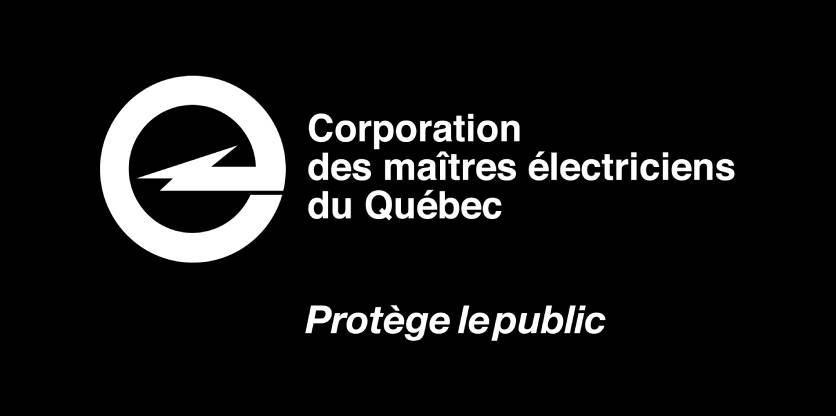Système de notification de masse et accessoires

De récents événements dans le sud de l’Alberta ont mené à une alerte Amber pour l’Alberta, la Saskatchewan, la Colombie-Britannique et le Montana ont réitéré la nécessité pour des moyens modernes de communication. Les désastres naturels, les attaques terroristes et d’autres incidents majeurs nécessitent une réponse urgente et efficace pour sauver des vies, réduire les dommages et assurer la poursuite des fonctions essentielles de la vie en société. La première édition de la norme CAN/ULC-S576-14 a été publiée en septembre 2014. Cette norme intéressera toute personne qui fabrique, distribue, utilise, réglemente ou inspecte l’équipement et les accessoires des systèmes de notification de masse.
Cette norme contient des exigences qui concernent les postes de contrôle électrique discrets, les postes de communication, les produits de transport qui manipulent les paquets de données, les interfaces et les accessoires des systèmes de notification de masse. Les produits visés sont destinés à être utilisés conjointement avec d’autres appareils et dispositifs, de manière à former un système de communication d’urgence et/ou de notification de masse. Ces produits sont destinés à transmettre des renseignements essentiels à l’intérieur des bâtiments et/ou des zones extérieures en cas de situations d’urgence.
Ces situations comprennent, sans toutefois s’y limiter, les activités terroristes, les déversements de produits chimiques dangereux, les conditions météorologiques extrêmes, les incendies, les alertes Amber et les autres situations qui sont susceptibles de mettre en péril la sécurité des occupants d’une zone ou d’une installation. Les communications se font par l’entremise de signaux vocaux, sonores et/ou visuels. Un ou des manuels d’installation accompagnant le produit décrivent les divers produits nécessaires pour former un système de communication d’urgence et/ou un système de notification de masse, ainsi que les directives liées à leur utilisation et à leur installation.
Ces exigences concernent les interfaces du système de communication que le personnel des services d’urgence utilise dans le cadre de ses fonctions si cet équipement de communication est utilisé pour assurer l’interface avec les systèmes de communication d’urgence/systèmes de notification de masse /SCU/SNM) ou pour contrôler ces derniers.
Recent events in Southern Alberta, which resulted in an Amber Alert being issued for Alberta, Saskatchewan, British Columbia, and Montana, reiterate the need for mass communication. Disasters, terrorist attacks and other major incidents need an effective incident response in order to save lives, mitigate harm and damage, and ensure a base level of continuity of essential societal functions. The protection of people at risk from harm is an important part of an incident response.
This first edition national standard, CAN/ULC-S576-14, Standard for Mass Notification System Equipment and Accessories, was published in September 2014. The standard covers discrete electrical control units, communication units, transport products which manipulate the data packets, interfaces, and accessories for mass notification systems. The products covered by this standard are intended to be used in combination with other appliances and devices to form an emergency communication and/or mass notification system. These products are intended to communicate critical information within buildings and/or outdoor areas about emergencies including but not limited to terrorist activities, hazardous chemical releases, severe weather, fire, Amber Alert, and other situations that may endanger the safety of the occupants of an area or facility. Communication is through voice, audible, and/or visual instructions.
Based on this standard, a mass notification system is described as a configuration of components and interfaces that are used to communicate information to occupants in a building, area site, or other space about emergency conditions. Systems may consist of equipment that can reproduce live and recorded voice messages, tones and visual indicators such as strobe lights and visual displays.
A mass notification can be described as In-Building, Wide Area or simply be specific to Distributed Recipients. A mass notification system could also be shared systems with non-emergency, security, building controls, and other non-fire equipment.
An In-Building mass notification system is a system used to provide information and instructions to occupants in a building or other space using voice communication, visible signalling and other communication methods. This system could include but would not be limited to
• fire voice speakers
• flat panel displays
• LED displays
• PA/intercom
• network PCs
• phone systems
• wired and wireless buttons
• indoor camera systems
A Wide Area mass notification system provides real time information to areas, including outdoor, in a contiguous or non-contiguous campus, region or global geographical setting. The area is not defined and therefore could extend globally. This system tends to include the following:
• sirens
• outdoor PA systems
• high power speaker arrays
• outdoor strobes
• electronic signage
• emergency call stations
• outdoor camera systems
A Distributed Recipient mass notification system is a system intended to communicate to targeted individuals that may not be in a contiguous area. This system can be best described as being at your side.
• pagers
• cell phones / smart phones
• personal emails
• IM (Instant Message) alerts
• duress alarms
• hand-held radios
• mass dialling systems
• computer pop-ups
Each application of a mass notification system should be specific to the nature and anticipated risks of each facility for which it is designed. For example, a cell phone text message should not be relied upon for emergency situations. An emergency response plan needs to consider both fire and non-fire emergencies, performance-based designs and a full risk analysis as the basis for development.
The CAN/ULC-S576 standard includes many physical requirements for enclosures, branch circuit and other wiring connections, internal wiring, protective devices, components and batteries, just to mention a few. Performance requirements within the standard include operational tests for In-Building, Wide Area and Distributed Recipient mass notification systems, which cover interfaces, power supplies, message communications, monitoring for integrity, security, and data protection.Additional performance tests are also included to cover the electrical aspects of these systems; for example, harmonic current tests, charging current test, overload test, leakage current test, and others.
It should be noted that an amendment is currently being drafted to align the Canadian requirements with UL2075. Copies of this standard are all available from the ULC Online Store or from Other resellers. Visit our website at: http://canada.ul.com/ulcstandards/aboutus/salesofulcstandardsmaterials/
In the international arena, there are several standards developed by ISO TC292 (Security and Resilience) relating to incidence response. ULC Standards is engaged in the work of ISO TC292:
• ISO 22320, Societal Security — Emergency management — Requirements for command and control. This international standard specifies requirements for effective incident response and provides the basics for command and control, operational information, coordination, and cooperation within an incident response organization. It enables public and private incident response organizations to improve their capabilities in handling all types of emergencies.
• ISO 22324, Societal security — Emergency management — Guidelines for colour coded alerts. This international standard provides guidelines for the use of colour codes to inform people at risk as well as first response personnel about danger and the severity of a situation to solicit them to seek more information or to take appropriate safety actions.
• ISO 22322, Societal security — Emergency management — Public warning. Public warnings, through a combination of prior notifications and alerts, enable people at risk to take appropriate and timely actions to protect their safety. This international standard provides guidelines for developing, managing and implementing public warning before, during and after incidents.
We have all noticed that it is becoming a smaller world. Events that we would have never heard about less than a century ago are now front and centre within the media and affect us in far greater numbers. Being able to react will be measured in how fast we can communicate in mass to those affected.
Read More from Pierre McDonald:
– Le Code et la sécurité publique par les normes sur les produits électriques
– Législation provinciale et exigences administratives du Code électrique
– Section 62 : Appareillage fixe de chauffage électrique
– Maintenant disponible: La norme ULC sur la sécurité en matière d’électricité sur les lieux de travail des services publics d’électricité
– Maintenant disponible: La norme ULC sur la sécurité en matière d’électricité sur les lieux de travail des services publics d’électricité: Parte 2
– UL Code Link
– Établir le moment où les nouveaux documents du Code s’appliquent
– Des changements aux sections 20, 32 et 46 du Code national de l’électricité qui sera adopté sous peu
– Classification des emplacements dangereux, ainsi que des gaz et vapeurs inflammables
Pierre McDonald, CET, is Senior Regulatory Affairs Representative/Répresentant Principal, Affaires Réglementaires, Underwriters Laboratories of Canada Inc. Based in St. Albert, AB, Pierre has been a member of the Canadian Electrical Code Part 1 technical committee as well as several subcommittees including serving as Chair of Sections 6 and 76 and as a member representing regulators on several other CSA committees. Pierre is still active with code development and interpretation.












